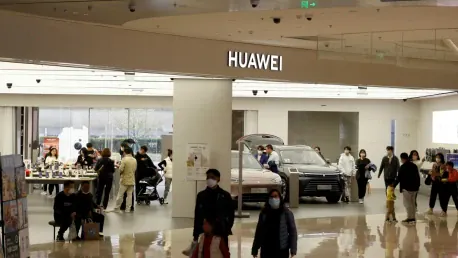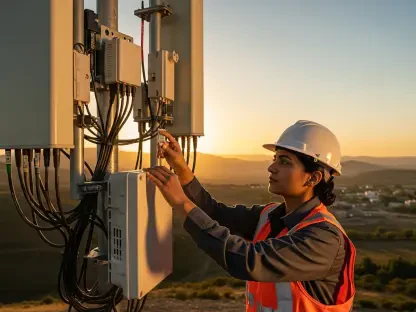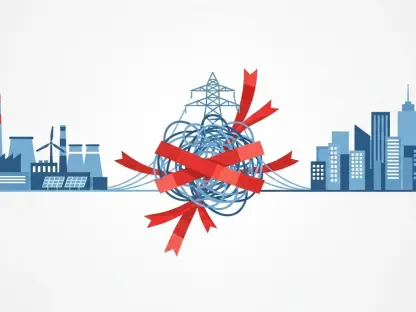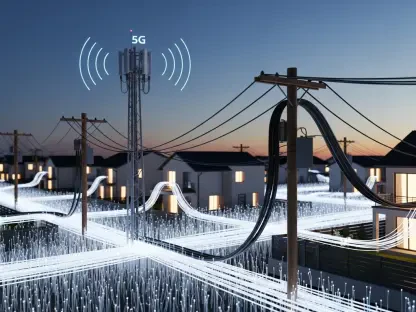The United Kingdom, which has historically been a frontrunner in technological advancements, now finds itself lagging behind other G7 countries in 5G mobile connectivity. According to Ookla, a connectivity intelligence firm, the UK’s 5G network ranks 53rd globally for median download speed and is the least competitive among the G7 nations. Surprisingly, the UK’s mobile network is now comparable to those of smaller Eastern European economies, rather than the affluent Western and Northern European neighbors it once competed with.
Impact of the Huawei Ban
Immediate Consequences of the Ban
One of the most significant reasons behind the UK’s 5G lag is the ban on Huawei, enacted in 2020 under pressure from then-US President Donald Trump. The ban was primarily due to concerns over cybersecurity, forcing UK operators to strip Huawei equipment from their 5G networks by 2027. This drastic measure resulted in a two-year delay in the 5G rollout and incurred a substantial financial burden estimated at around £2 billion. This ban required telecom companies to find and adapt to alternative suppliers, a process laden with technical and logistical challenges.
British telecom giant BT alone bore an extra cost of approximately £500 million due to the ban, highlighting the considerable financial ramifications. Transitioning from Huawei to other equipment providers was not only costly but time-consuming, causing further delays. The impact of the Huawei ban essentially set the UK’s 5G rollout back by two years. This delay has had cascading effects, slowing down the nation’s overall technological progress and its ability to compete on a global stage.
Longer-Term Effects of the Ban
Beyond immediate financial and operational impacts, the decision to ban Huawei has had longer-term strategic consequences on the UK’s 5G deployment. By removing Huawei, a major player in the 5G technology space, the UK inadvertently limited its options, leading to reduced competition and potentially suboptimal technological solutions. Relying on fewer suppliers not only increased costs but also reduced the speed at which the UK could modernize its network infrastructure. This situation created a vacuum that has proven difficult to fill, especially given the high standards required for 5G technology.
The longer-term effects of this strategic decision may also impact the UK’s relationships with other global telecom providers. The dependency on a limited number of suppliers could translate into technology dependency, restricting innovation and competitiveness. Operators may find themselves negotiating from a position of weakness, potentially leading to higher prices and less favorable terms. The broader implication is that the UK might struggle to meet its ambitious 2030 goal of ensuring 5G coverage in all populated areas, thus delaying its benefits for residents and businesses alike.
COVID-19 Pandemic and Its Consequences
Delays in Infrastructure Development
The COVID-19 pandemic further compounded the delays caused by the Huawei ban, creating a perfect storm that severely hindered the UK’s 5G rollout. As the world shifted into lockdown, operators redirected their priorities from expanding mobile networks to improving home networks to accommodate the soaring demand for remote work and online services. Consequently, efforts to extend 5G coverage took a backseat. Stringent pandemic restrictions also severely hampered technicians’ ability to build and deploy network infrastructure, stalling progress at a critical juncture.
George Elliott from Mobile UK emphasized how the pandemic restrictions impacted technicians’ work: limits on their movement and strict health protocols reduced the workforce available for critical infrastructure projects. The focus shifted to maintaining existing networks rather than expanding them, a necessary but temporary diversion that set back 5G rollout timelines. This shift in focus was unavoidable, given the immediate needs of the population and the unprecedented circumstances.
Changing Focus During the Pandemic
The pandemic also forced telecom companies to adjust their priorities and resources, diverting funds and attention away from 5G rollout efforts. While the goal of nationwide 5G remained, the immediate requirement to bolster home internet services temporarily took precedence. For many operators, this meant redirecting financial and human resources to enhance existing broadband infrastructure, ensuring homes were well-connected for work, education, and entertainment needs during lockdowns.
This reallocation of resources has led to extended delays in the broader 5G deployment strategy. Projects that had been scheduled for completion within a few months were postponed. Deadlines were pushed back as operators grappled with the immediate demands of the pandemic. This delay not only affected infrastructure build-out but also delayed necessary regulatory approvals, further complicating the timeline for widespread 5G coverage. As the country began to emerge from the worst of the pandemic, the telecom sector faced the daunting task of playing catch up while also preparing for future demands.
Investment Challenges and Regulatory Hurdles
Insufficient Investment in 5G Infrastructure
A lack of substantial investment has also played a crucial role in the UK’s lagging 5G connectivity. The UK government has set an ambitious goal of achieving 5G coverage in all populated areas by 2030, but this endeavor could potentially require up to £34 billion, far surpassing current investment levels. Although telecom giants Vodafone and Three have pledged to invest £11 billion to create an advanced 5G network, this commitment appears insufficient in meeting the optimal infrastructure requirements.
An unnamed operator expressed regret over what they perceived as the government’s premature push to launch 5G. Launching a non-standalone version of the network resulted in suboptimal performance, exacerbating the issue further. The initial rollout was hurried to meet government deadlines, sacrificing quality and robustness for speed. This approach, they argue, compromised the potential of 5G, relegating the network to underwhelming performance metrics compared to international standards. Critics argue that without addressing these funding gaps, the UK will continue to struggle in catching up to its G7 counterparts.
Regulatory and Legal Obstacles
Complicating the investment shortfall are regulatory and legal challenges that have stymied the rapid deployment of 5G infrastructure. Operators have consistently faced legal disputes over tower installations and had to navigate complex planning laws, drastically hindering the efficient deployment of necessary infrastructure. These regulatory hurdles not only delay the process but also increase the overall cost of infrastructure projects, further stretching thin the limited resources available.
Operators have cited these regulations as significant obstacles, arguing that they excessively prioritize local players’ interests while slowing down national progress. The cumbersome processes of obtaining the necessary approvals and overcoming legal challenges have prolonged timelines, adding to existing delays caused by other factors. Such bureaucratic bottlenecks make it difficult for the UK to establish a seamless 5G network, limiting its competitiveness on the global stage and frustrating both operators and consumers.
Future Considerations
The United Kingdom, historically a leader in technological innovation, currently trails other G7 nations in 5G mobile connectivity. According to Ookla, a connectivity intelligence firm, the UK’s 5G network ranks 53rd worldwide for median download speeds, making it the least competitive among the G7 countries. This surprising lag places the UK’s mobile network on par with those of smaller Eastern European economies, rather than the wealthy Western and Northern European nations it once battled neck and neck with in the technological race. The decline is notable given that the UK has been at the forefront of numerous tech advancements over the years. This situation underscores a significant shift in the global landscape of mobile connectivity, highlighting the growing prominence of countries previously considered peripheral in this high-stakes domain. The need for the UK to reinvest and innovate in its 5G infrastructure is more critical than ever to regain its former standing and ensure its competitiveness in this rapidly evolving sector.









